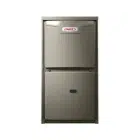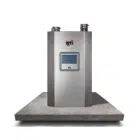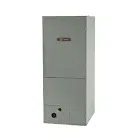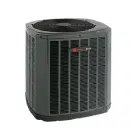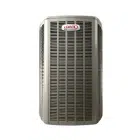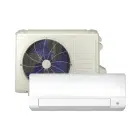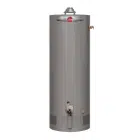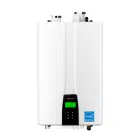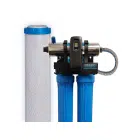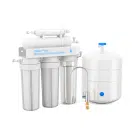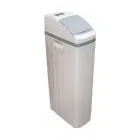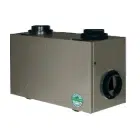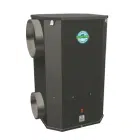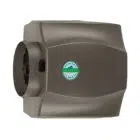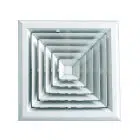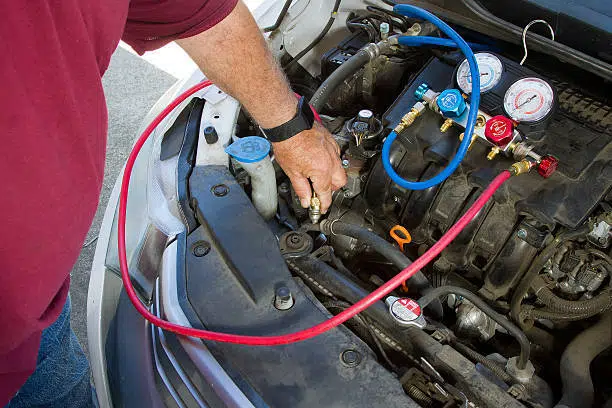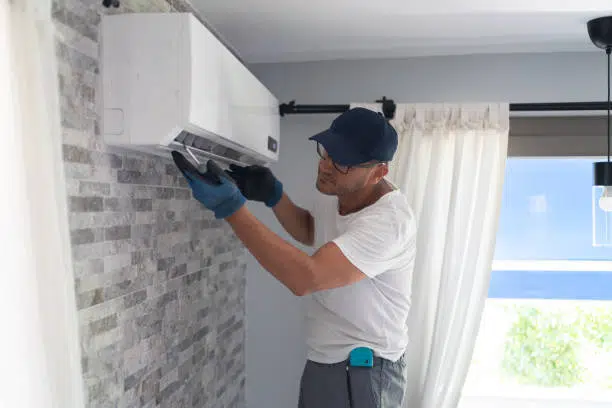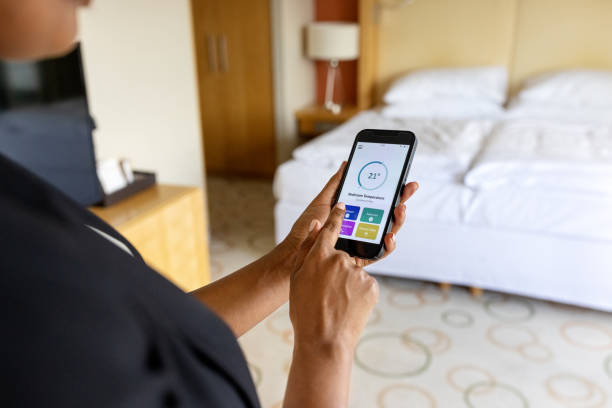
Table of Contents
It’s a hot day, and you notice your air conditioner won’t turn on but has power — a frustrating situation for any homeowner. Even though your unit seems to be receiving electricity, the system refuses to start. What’s going on? Understanding the potential causes is essential to restoring your home’s comfort quickly and avoiding further damage.
At HVAC Service Solutions Company, we specialize in diagnosing and fixing AC problems efficiently across Canada. Let’s dive into why this happens and how you can respond.
Why Your Air Conditioner Won’t Turn On Even Though It Has Power
If your air conditioner won’t turn on but has power, it usually points to an internal malfunction rather than an issue with your home’s electrical system. Power might be reaching the unit, but certain components must work together properly for your AC to operate.
Common causes include thermostat malfunctions, clogged filters, safety switch activations, failed capacitors, damaged contactors, or internal electrical issues. Understanding these possible problems can help you better communicate with your HVAC technician or troubleshoot minor issues yourself before seeking professional assistance.
Thermostat Issues
One of the first places to look when your AC is not starting but power is fine is the thermostat. It controls the entire system, telling your air conditioner when to turn on and off.
Simple mistakes, such as the thermostat being set to “heat” instead of “cool,” or a temperature setting that’s too high, can prevent your AC from activating. Dead thermostat batteries are another frequent culprit — if the display is blank or flickering, try replacing them.
Sometimes, the thermostat itself is faulty or incorrectly wired. If you replace the batteries and double-check the settings without success, it might be time to consult a professional HVAC technician near you to evaluate the thermostat or install a replacement.
Clogged Air Filter or Blocked Airflow
Believe it or not, a dirty air filter can stop your air conditioner from running. When airflow becomes restricted due to a clogged filter, your system’s internal sensors can detect strain and shut the unit down as a protective measure.
Reduced airflow leads to overheating and can cause components like the evaporator coil to freeze up, preventing the system from turning on even though it has power.
Check your air filter first — if it looks dirty or clogged, replace it immediately. Regular AC maintenance of your filters is crucial to preventing issues like your air conditioner not turning on but having power.
Tripped Safety Switches or Overflow Shutoff
Modern air conditioners include safety features that protect your home from water damage. One such device is the float switch or condensate overflow shutoff switch.
When the AC’s drain pan fills with water due to a clogged drain line, the float switch automatically cuts power to the cooling system to prevent flooding.
If your unit won’t start and you see standing water around your indoor air handler or notice the drain pan is full, this could be the reason. Clearing the drain line can often solve the issue, but if you’re unsure how to do it safely, contacting HVAC Service Solutions Company ensures it’s handled properly.
Problems With the Capacitor or Contactor
When you notice your air conditioner won’t turn on but has power, the capacitor or contactor might be to blame.
The capacitor provides the initial jolt of electricity that powers up your AC’s compressor and fan motors. If it fails, you’ll often hear a faint clicking noise when the thermostat signals for cooling, but the system won’t actually start.
Similarly, a bad contactor — which controls the flow of electricity to your compressor — can also prevent startup. Diagnosing and replacing these parts is dangerous for DIY attempts due to high voltage risks. HVAC Service Solutions Company’s licensed technicians can test these components and replace them safely if needed.
Check the AC capacitor failure symptoms in our previous article via the link.
Carefully inspect the outdoor condenser unit. Remove the access panel and check for obvious signs of capacitor damage — bulging tops, leaks, corrosion, or burning smells. If the capacitor looks damaged, do not attempt to power the system back on.
If your AC is humming but the fan or compressor won’t start, the capacitor may be struggling. You can try gently pushing the fan blade (using a stick or insulated screwdriver — not your hand) to see if it spins. If it starts spinning but doesn’t stay running, your capacitor is likely bad.
Internal Fuse or Control Board Issues
Another hidden cause of AC not starting but power is fine is an internal fuse blowout or control board failure.
Internal fuses can blow due to electrical surges, grounding issues, or short circuits within the system. Meanwhile, the control board — essentially the “brain” of the AC unit — can malfunction, leading to unresponsive behavior even when the system has power.
Unfortunately, diagnosing control board problems requires technical expertise and specialized equipment. If you suspect internal damage, it’s best to schedule a service call with HVAC Service Solutions Company. We offer comprehensive air conditioner troubleshooting across Canada, ensuring fast, effective solutions.
Can I Fix It Myself? (DIY Troubleshooting Tips)
Before calling a professional, there are a few safe checks you can perform:
- Inspect the thermostat settings: Ensure it’s on “cool” and set lower than the current room temperature.
- Replace thermostat batteries if needed.
- Check the air filter: Replace it if it’s dirty.
- Look at the outdoor unit: Make sure it’s not covered by debris, dirt, or ice.
- Check the circuit breaker: Reset it if it has tripped, but if it keeps tripping, call an HVAC expert immediately.
However, if these steps don’t fix the problem, avoid tampering with internal parts. Electrical issues can escalate quickly. It’s safer to trust a professional AC repair service near you.
Conclusion
Dealing with an air conditioner that won’t turn on but has power can be stressful, but understanding the possible causes can help you act fast. From simple thermostat fixes to complex internal repairs, timely action prevents larger and costlier problems.
If you need expert help, don’t hesitate to contact HVAC Service Solutions Company — your trusted partner for professional HVAC troubleshooting and repair across Canada.
FAQs
1. Why is my air conditioner not turning on even though it has power?
If your air conditioner won’t turn on but has power, it usually points to internal issues like a tripped safety switch, thermostat malfunction, or a blown capacitor. It could also mean your AC is in protection mode to prevent further damage. While the unit seems to have electricity, vital components may have failed. Checking your thermostat settings, resetting the system, or inspecting the circuit breaker can sometimes resolve the issue. If the problem persists, it’s best to call a professional. Our team at HVAC Service Solutions Company can quickly diagnose and fix the problem anywhere in Canada.
2. Can a bad thermostat cause my AC to have power but not turn on?
Yes, a faulty thermostat is one of the most common reasons your air conditioner won’t turn on but has power. If the thermostat can’t properly communicate with your system, the AC won’t receive the signal to start cooling. This can happen if the thermostat is old, incorrectly wired, has dead batteries, or is simply broken. Sometimes, recalibrating or replacing the thermostat fixes the problem. It’s worth checking the settings first to ensure it’s set to “Cool” and the temperature is lower than the room temperature. If you’re unsure, a licensed HVAC technician from our team can help.
3. How do I reset my air conditioner if it won’t turn on?
Resetting your air conditioner can sometimes solve the issue if your air conditioner won’t turn on but has power. To reset, turn off the thermostat, locate the AC’s disconnect switch or circuit breaker, and turn it off. Wait about 5 minutes before turning it back on to allow the system to fully reset. Then, turn the thermostat back on and set it to “Cool” at a temperature lower than the room temperature. If the AC still doesn’t respond after a reset, it’s likely a deeper mechanical problem requiring professional attention.
4. Could a clogged air filter prevent my air conditioner from turning on?
While a clogged air filter alone usually doesn’t stop an AC from turning on, it can cause overheating, triggering internal safety switches that shut the system down. When airflow is restricted, components like the evaporator coil can freeze or the system can overheat. If your air conditioner won’t turn on but has power and you haven’t changed the air filter recently, checking and replacing it is a smart first step. Regular maintenance can prevent these types of shutdowns. If replacing the filter doesn’t help, you may need a professional inspection.
5. Is it safe to keep trying to turn on an AC that won't start?
It’s not recommended to keep trying to restart an AC that won’t turn on but has power. Repeated attempts can put extra stress on internal components like the compressor, worsening any existing damage. Moreover, if there’s an electrical issue, you could risk further failure or even a fire hazard. It’s safer to diagnose the underlying cause or call an experienced HVAC company like HVAC Service Solutions to handle it. We’ll make sure your system is safely assessed and properly repaired.
6. What is a contactor, and could it be why my AC isn’t turning on?
The contactor is a small electrical switch inside your AC unit that controls the flow of electricity to the compressor and fan motors. If the contactor is worn out or stuck, your air conditioner won’t turn on but has power. Over time, contactors can get burned, pitted, or fail mechanically. Replacing a faulty contactor is a relatively straightforward repair, but it involves working with high-voltage components, so it’s not usually a DIY job. It’s best to have a professional technician check it for you.
7. Can low refrigerant levels cause my air conditioner to not turn on?
Indirectly, yes. Extremely low refrigerant levels can cause your system to trip safety sensors or go into protection mode. Some modern AC units have low-pressure switches that prevent the compressor from operating if refrigerant levels are too low. If your air conditioner won’t turn on but has power, and you’ve noticed poor cooling performance before, low refrigerant might be the culprit. Only licensed HVAC technicians are allowed to handle refrigerant, so you’ll need professional help to confirm and recharge your system.
8. What signs should I look for to know if the AC capacitor is bad?
A bad capacitor is a frequent reason an air conditioner won’t turn on but has power. Signs of a bad capacitor include humming noises when the AC tries to start, the fan not spinning, or the unit struggling to kick on before shutting off again. Capacitors store the energy needed to start major components, and when they fail, the system can’t operate properly. Since capacitors deal with electricity, replacing them yourself can be dangerous. Contact HVAC Service Solutions Company to safely replace it and restore your system.
9. Should I check the breaker if my AC won’t turn on but has power?
Absolutely. Sometimes a partially tripped breaker can supply enough voltage for lights or minor functions but not enough to fully start the air conditioner. Find your home’s electrical panel and inspect the AC breaker — if it’s sitting between “ON” and “OFF,” reset it by switching it off and back on. If the breaker trips again immediately, that points to a more serious electrical issue. In that case, calling a qualified HVAC professional is the safest approach.
10. When should I call a professional if my air conditioner has power but won't turn on?
If basic troubleshooting like resetting the breaker, replacing the thermostat batteries, or changing the air filter doesn’t fix the problem, it’s time to call a professional. Issues like bad capacitors, faulty contactors, refrigerant problems, or compressor failure require specialized tools and expertise. Trying DIY repairs beyond simple resets can risk damaging your system or voiding your warranty. HVAC Service Solutions Company offers fast, reliable AC repair services across Canada, ensuring your home stays cool and comfortable without unnecessary stress.
Share

